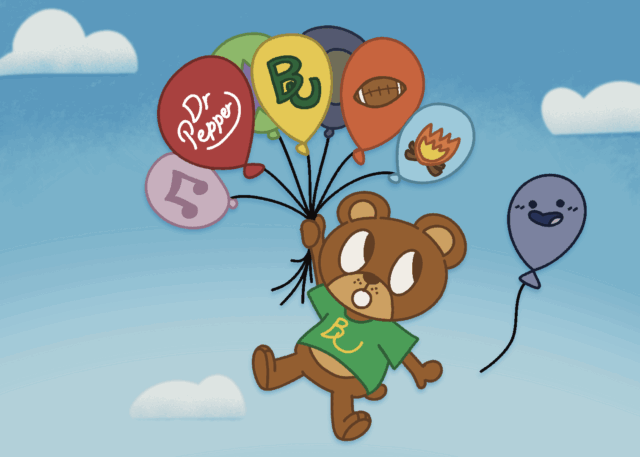By The Editorial Board
In just a few days, Baylor’s 116th celebration of homecoming will commence, ringing in all the craziness and excitement that comes with it every year. Events like Pigskin Revue, the parade and the football game are long-awaited and long prepared for, with students putting in the work toward these events for months prior.
For many students and organizations involved, there’s pressure to be perfect. We want to preserve the glory of homecoming and bring pride to the alumni, staff and families returning to celebrate with us.
And for those who are attendees rather than participants in the event’s festivities, homecoming becomes somewhat of a geo-caching experience. The weekend becomes a scramble to see how many events one can hit in 48 hours. Students exhaust themselves, dashing from Dinner with the Livingstones to the bonfire, to the parade, to the tailgate and game, mostly for the sake of getting photos with friends and avoiding FOMO.
Now the history of our university’s homecoming is a legacy in itself. For instance, Baylor was the first university to host a homecoming celebration in 1909. We think it’s fair to say that homecoming is kind of Baylor’s thing.
With all of Baylor’s Homecoming pomp, fanfare and pride, it can become easy to get lost in the events themselves. When that’s all we view homecoming as, the weekend will end and leave us pondering the tradition’s true purpose.
Sure, the word “homecoming” literally means “the return home,” according to Merriam-Webster. But what is the significance of returning home, in alumni returning to Baylor? It’s certainly not just to make sure Pigskin acts now are as exceptional as they were in the ‘90s. Surely the reason isn’t just to get a selfie with Indy and Belle. And it’s certainly not to attend what some sports reporters are saying could be the final football game coached by Dave Aranda.
What brings Bears back is more than these beloved traditions; it’s the reunification of students and faculty with alumni, former professors and family from near and far, bridging the past and present Baylor generations. At the heart of homecoming is a gathering of friends and family, and an opportunity to make memories with each other, right here at Baylor — a place all of us have called “home” at some point.
Even more, this time is an opportunity to be thankful for the memories, experiences and people that our university has brought all of us, and a chance to honor the students and staff who continue to carry on Baylor’s legacy today.
A recounting of the first homecoming by The Baylor Bulletin, the university’s historical publication, puts it best:
“The purpose of Home-Coming was to give an opportunity for the joyful meeting of former student friends, an occasion when old classmates could again feel the warm hand-clasp of their fellows, recall old memories and associations, and catch the Baylor spirit again.
“From the enthusiastic expressions of the hundreds of visiting students the object of the reunion was finally realized. All went back to their homes with a deeper love in their hearts for their Alma Mater.”
So instead of booking yourself to the max this homecoming, all for the sake of saying you went, make your homecoming experience meaningful. Spend it with the people who mean the most to you, whether that’s family, friends or colleagues. Take it as a chance to focus on the people and the purpose.
When the lights fade after Pigskin, the parade crowds thin and the last echo of the fight song drifts away, what remains isn’t the confetti or the Instagram posts — it’s the people beside us. Homecoming isn’t truly about the spectacle; it’s about the shared sense of belonging that brings us back year after year. So let this weekend be more than a checklist of traditions; instead, let it be a reminder of why we call this place home.


